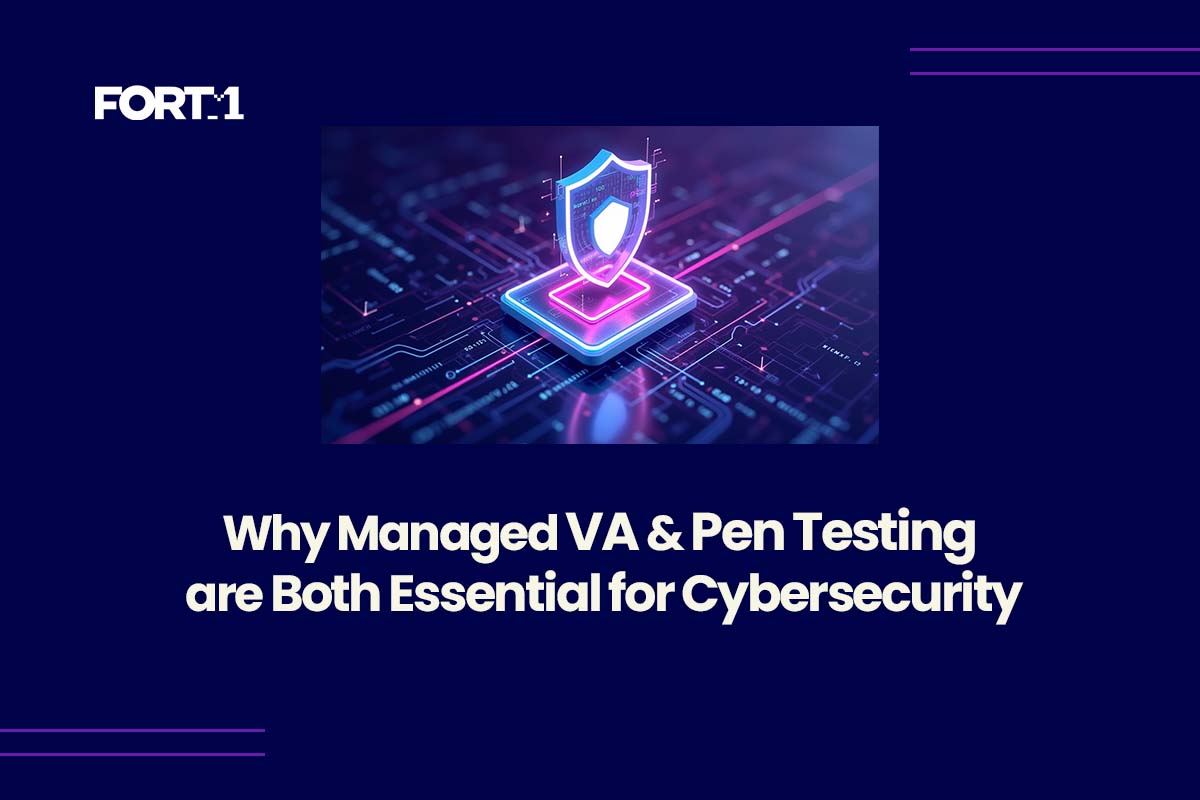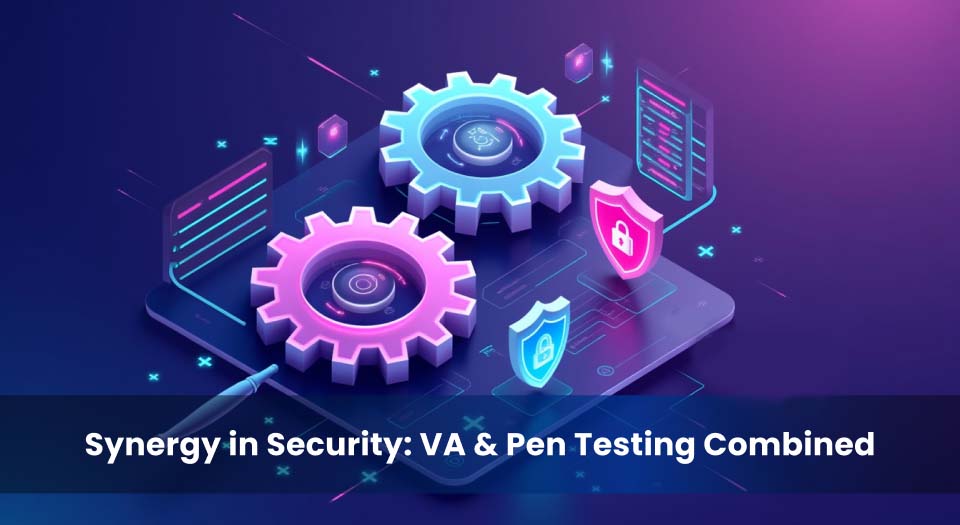




Cybersecurity threats continue to escalate, with data breaches and system compromises costing businesses millions each year. In Australia, cybercrime reports surged by 23% in 2023, according to the Australian Cyber Security Centre (ACSC), with vulnerabilities in business systems being a major attack vector. To counteract these risks, organisations must implement robust security measures, including Managed Vulnerability Assessment (Managed VA) and Penetration Testing (Pen Testing).
Managed VA is a structured approach to continuously identifying and assessing security weaknesses within an organisation’s infrastructure. It provides businesses with ongoing visibility into potential threats, allowing them to prioritise and remediate vulnerabilities before they are exploited. In contrast, Pen Testing simulates real-world cyberattacks to determine how adversaries could exploit weaknesses, offering a deeper understanding of security gaps beyond automated scans.
While Managed VA focuses on detection and remediation, Pen Testing assesses exploitability, making them complementary rather than interchangeable. Relying on only one method leaves organisations exposed to evolving cyber threats. This article examines why businesses need both approaches to build a resilient security posture, aligning with industry standards such as ISO 27001 and the Essential Eight framework.
Cyber threats continue to evolve, exploiting weaknesses in systems before organisations can react. Managed Vulnerability Assessment (Managed VA) is a structured security practice designed to proactively detect, assess, and prioritise vulnerabilities within an organisation’s infrastructure. Unlike reactive approaches that only address threats after an incident occurs, Managed VA provides continuous security monitoring, ensuring that emerging vulnerabilities are identified before they can be exploited.
Managed VA operates through automated vulnerability scanning, detailed reporting, and remediation guidance. Security teams deploy specialised tools that scan systems, networks, and applications for known weaknesses, misconfigurations, and outdated software. The results are compiled into a report that categorises vulnerabilities based on risk severity, helping organisations prioritise remediation efforts effectively. Many frameworks, including ISO 27001 and the Essential Eight, recommend continuous vulnerability assessments as a fundamental cybersecurity measure.
Since new vulnerabilities emerge constantly, Managed VA is an ongoing process, not a one-time solution. Businesses that rely on annual security audits alone risk overlooking critical security gaps.
| Aspect | Automated Vulnerability Scanning | Manual Assessment |
|---|---|---|
| Speed | Fast, scans large environments quickly | Slower, requires expert analysis |
| Accuracy | High false positives; requires validation | Lower false positives; contextual analysis |
| Depth of Analysis | Identifies known vulnerabilities | Finds complex, logic-based security flaws |
| Automation | Fully automated | Requires human expertise |
| Recommended Use | Continuous monitoring | Deep analysis for critical systems |
This comparison underscores the importance of combining automated scanning with expert manual analysis to ensure a comprehensive vulnerability management approach.

Cyber adversaries continuously develop new tactics to infiltrate networks, exploit vulnerabilities, and compromise sensitive data. Penetration Testing (Pen Testing) is a proactive security measure that simulates real-world cyberattacks to evaluate an organisation’s resilience against threats. Unlike vulnerability assessments, which focus on identifying weaknesses, Pen Testing goes a step further by actively exploiting security gaps to determine the true impact of potential breaches.
While Managed VA provides continuous scanning and reporting on security flaws, Pen Testing assesses whether those vulnerabilities can be exploited under realistic attack scenarios. This distinction is crucial—automated VA tools may flag vulnerabilities, but without manual testing, organisations cannot assess how easily a hacker could exploit them.
| Aspect | Managed Vulnerability Assessment | Penetration Testing |
|---|---|---|
| Objective | Identify known vulnerabilities | Exploit vulnerabilities to assess real-world risk |
| Methodology | Automated scanning with periodic reports | Manual testing simulating real-world attacks |
| Frequency | Continuous or scheduled (e.g., weekly or monthly) | Point-in-time (e.g., quarterly or annually) |
| Scope | Broad, covering all assets | Targeted, focusing on critical systems |
| Compliance | Essential for frameworks like ISO 27001 and ASD Essential Eight | Mandatory for APRA CPS 234 and PCI DSS compliance |
By combining Managed VA for ongoing vulnerability detection and Pen Testing for real-world exploitability analysis, organisations can establish a robust cybersecurity strategy that mitigates risks effectively.

A strong cybersecurity strategy requires both Managed Vulnerability Assessment (Managed VA) and Penetration Testing (Pen Testing) to address security risks effectively. While these methodologies serve distinct functions, they are most effective when used together, providing a holistic view of an organisation’s security posture.
Managed VA is a continuous security measure that detects vulnerabilities by scanning systems for misconfigurations, outdated software, and security flaws. However, these scans only report weaknesses without assessing their exploitability. On the other hand, Pen Testing simulates real-world attacks, demonstrating whether a vulnerability can be leveraged to gain unauthorised access or disrupt operations.
A Managed VA scan detects an outdated software version in a company’s database system. Without further analysis, the organisation may assume it is a minor risk. However, a Pen Tester attempts an exploit on the outdated software and gains unauthorised access to confidential data. This example highlights the necessity of using both approaches—Managed VA to identify risks and Pen Testing to validate and prioritise remediation efforts.
Leading security frameworks such as NIST Cybersecurity Framework (NIST CSF) and the Australian Government’s Essential Eight recommend combining automated vulnerability assessments with regular penetration testing to mitigate cyber risks effectively.
This closed-loop security approach ensures that vulnerabilities are detected, tested, prioritised, and monitored continuously, reducing cyber risks and enhancing organisational resilience.
Cybersecurity misinterpretations can leave organisations vulnerable to attacks. Many businesses mistakenly believe that either Managed Vulnerability Assessment (Managed VA) or Penetration Testing (Pen Testing) alone is sufficient, leading to gaps in their security posture. Below are three prevalent misconceptions that must be addressed:
A well-structured cybersecurity strategy integrates both Managed VA and Pen Testing, ensuring ongoing visibility and real-world security validation.
| Myth | Reality |
|---|---|
| Pen Testing alone is enough to secure a system. | Pen Testing is a one-time assessment. Continuous VA is required to detect new vulnerabilities. |
| VA scans can replace Pen Testing. | VA identifies vulnerabilities but does not simulate real-world exploits. Pen Testing validates their impact. |
| Once-a-year Pen Testing is sufficient. | Cyber threats evolve constantly. Organisations need frequent scanning and periodic testing. |
By debunking these misconceptions, businesses can adopt a proactive security approach, leveraging both Managed VA and Pen Testing to safeguard their critical assets.
A well-structured cybersecurity strategy integrates both Managed Vulnerability Assessment (Managed VA) and Penetration Testing (Pen Testing) to ensure continuous risk identification and real-world security validation. Businesses must adopt a proactive approach to defend against evolving cyber threats effectively.
By implementing these best practices, organisations can establish a continuous security improvement cycle, minimising cyber risks while maintaining compliance with industry standards.
A comprehensive cybersecurity strategy requires both Managed Vulnerability Assessment (Managed VA) and Penetration Testing (Pen Testing) to mitigate evolving threats effectively. These two approaches are complementary, not interchangeable—Managed VA continuously identifies vulnerabilities, while Pen Testing validates exploitability and tests real-world defences. Relying on only one method creates security blind spots, leaving organisations vulnerable to sophisticated attacks.
To achieve robust cyber resilience, businesses must adopt a continuous vulnerability management approach with regular Managed VA scans and periodic Pen Testing. Aligning with recognised cybersecurity frameworks such as NIST CSF, ISO 27001, and ASD Essential Eight ensures compliance and strengthens security posture.
Cyber threats are constantly evolving—is your organisation’s security keeping up? At Fort1, we provide comprehensive cybersecurity solutions, including Managed VA, Pen Testing, and risk management services tailored to your business needs. Our expert team helps businesses identify, assess, and remediate security gaps to ensure long-term protection.
🔹 Assess your security today. Contact Fort1 for a consultation and discover how we can help fortify your organisation’s defences against cyber threats.

Fort1 provides comprehensive cybersecurity solutions tailored to protect your business from evolving digital threats. With expertise in penetration testing, dark web monitoring, and managed detection services, we empower organisations to stay secure and resilient in the face of modern cyber challenges.
Copyright @2024 Fort1. All Rights Reserved by Fort1.